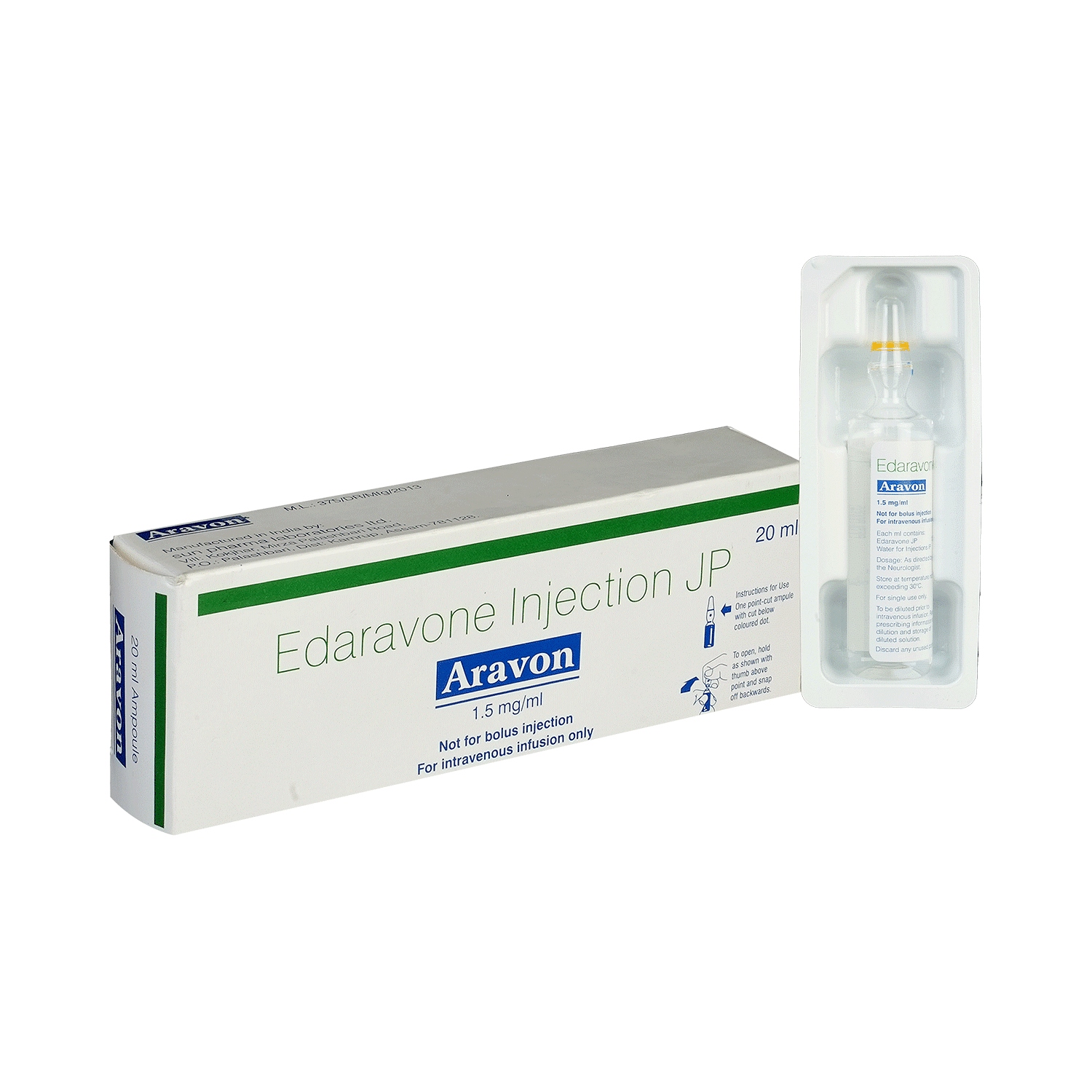
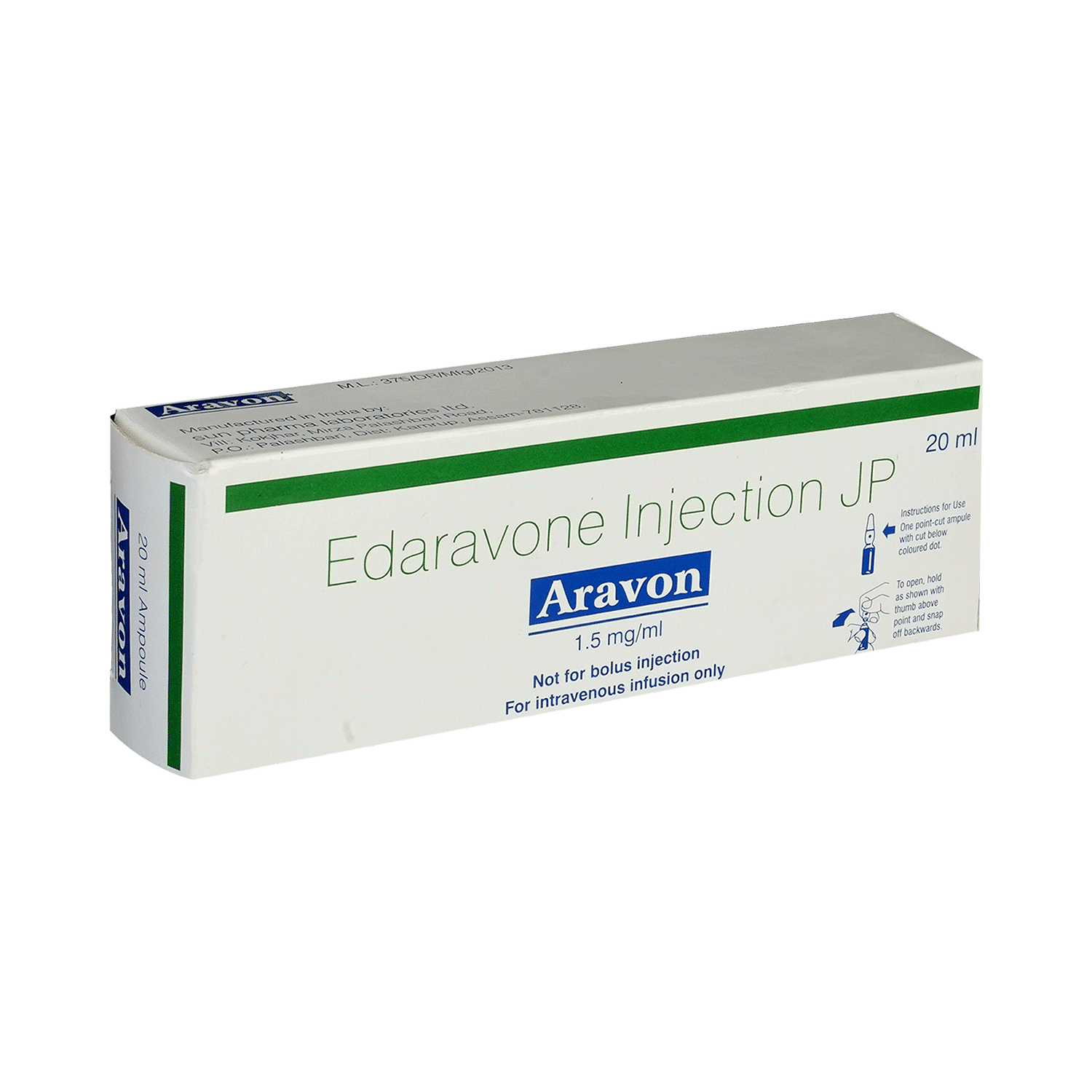
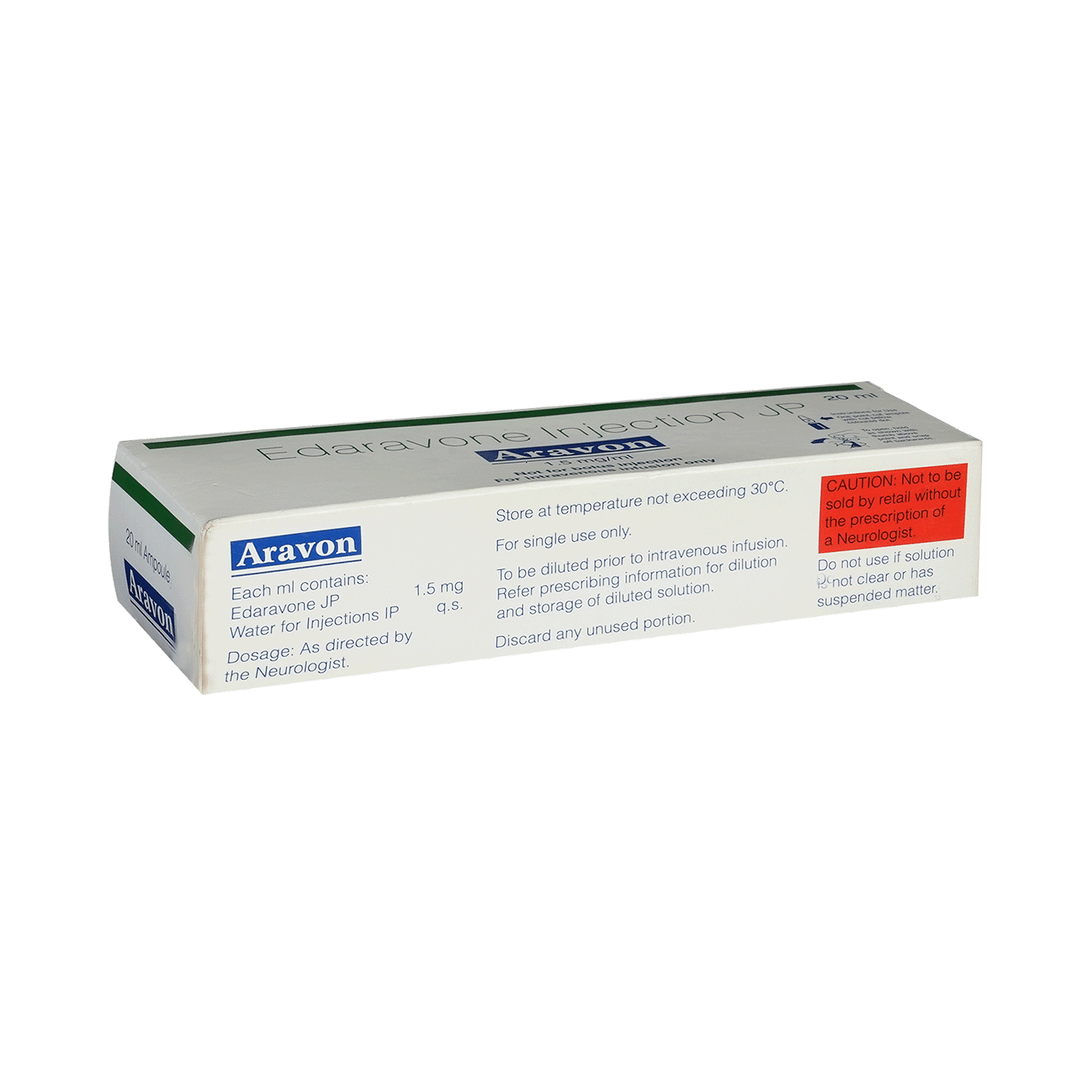

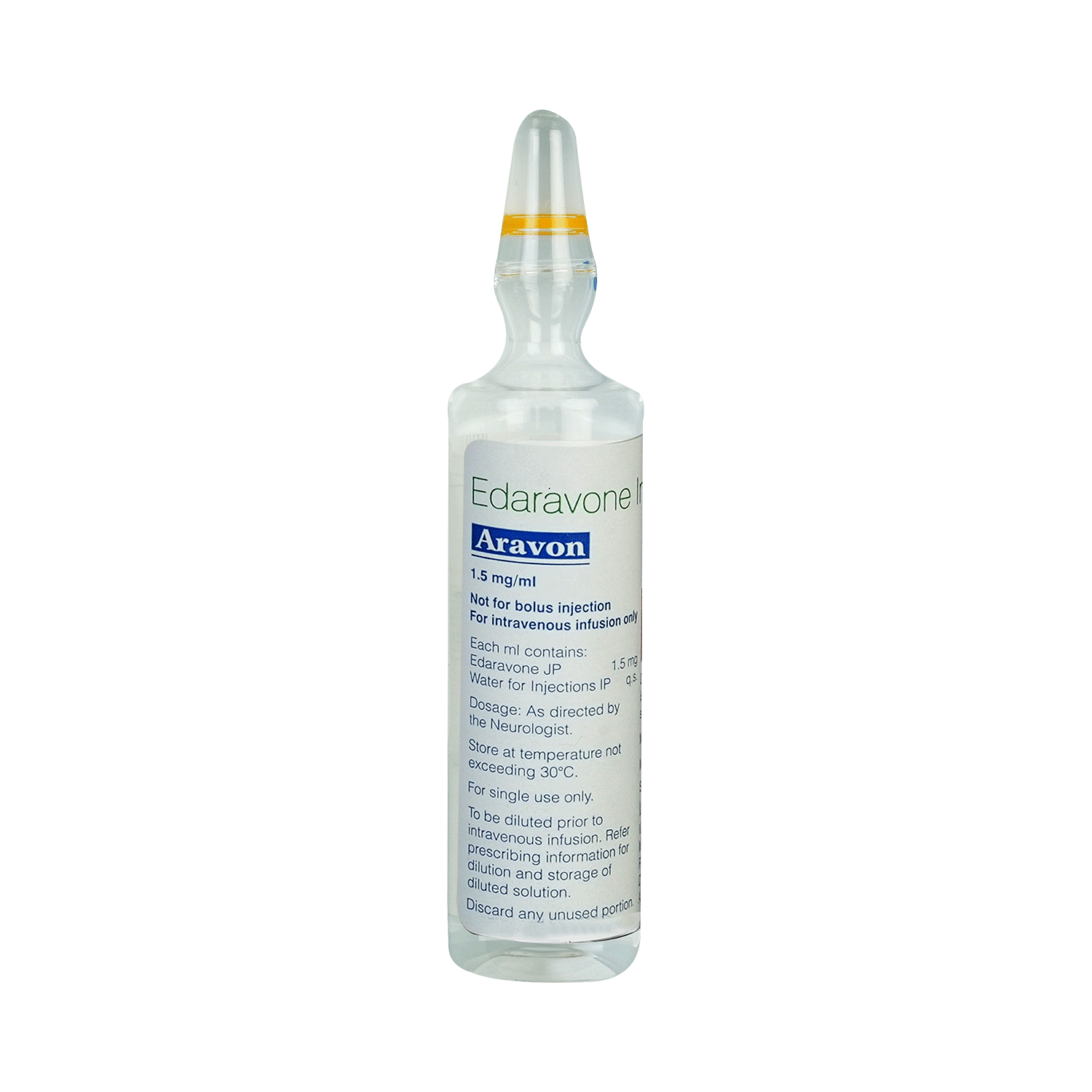
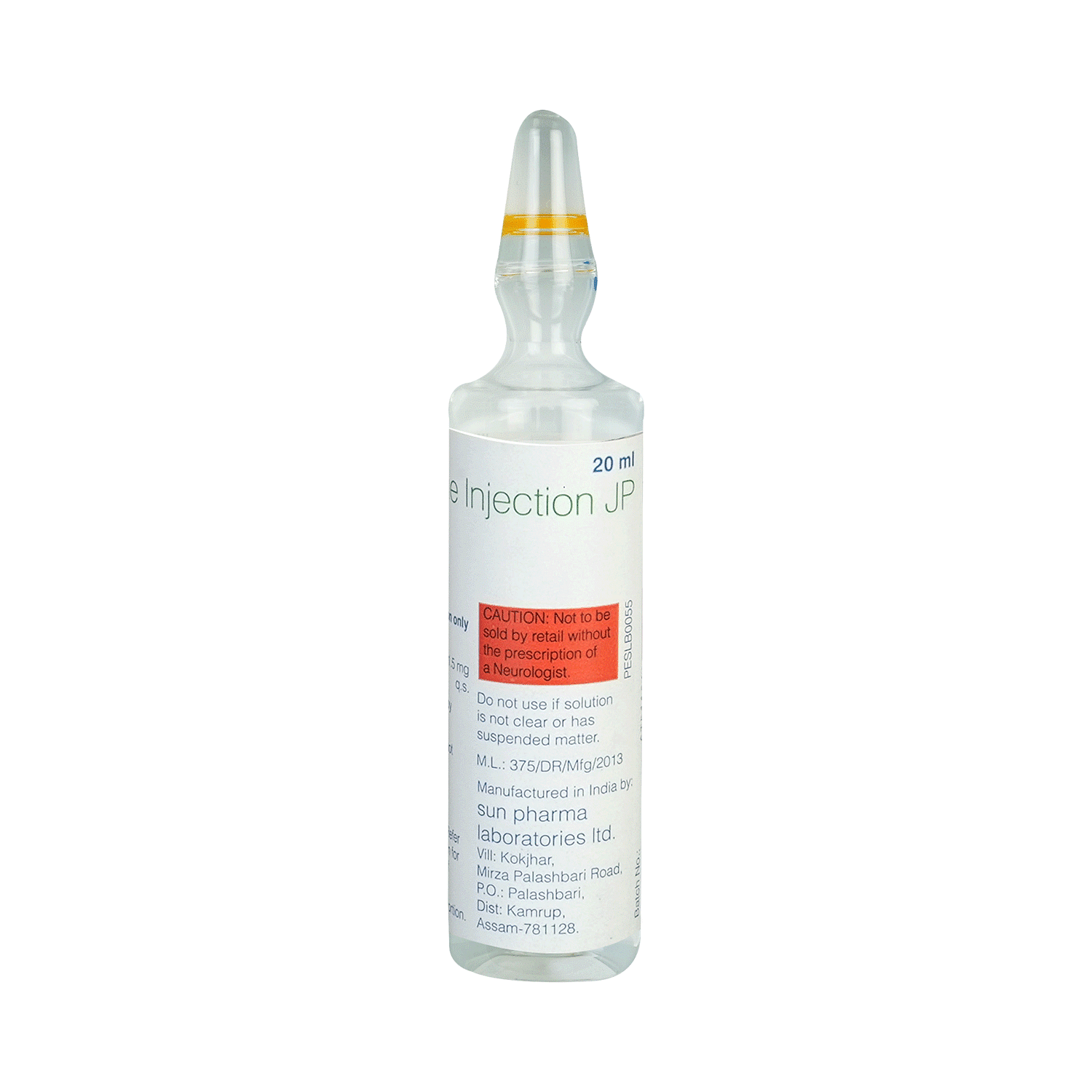
Aravon Injection
Manufacturer
Sun Pharmaceutical Industries Ltd
Salt Composition
Edaravone (1.5mg)
Key Information
Short Description
Aravon Injection is used in the treatment of amyotrophic lateral sclerosis (a nervous system disease that weakens the muscles and impairs physical functions).
Dosage Form
Injection
Introduction
Aravon Injection is administered as an injection under the supervision of a healthcare professional and should not be self-administered. It is given in cases where oral administration is not possible. Take this medicine in the dose and duration as advised by your doctor and if you have missed a dose, take it as soon as you remember. The most common side effects of this medicine are headache, bruising, and walking difficulties (gait disturbance). You may also notice some injection site reactions such as pain, redness, or swelling. However, these are temporary and usually resolve on their own. Please consult your doctor if these do not subside or bother you.
Directions for Use
Your doctor or nurse will give you this medicine. Kindly do not self-administer.
How it works
Aravon Injection is an antioxidant. It has nootropic (enrichment of nerves) and neuroprotective properties. It works by slowing the nerve damage caused by harmful chemicals (free radicals). This delays the progression of amyotrophic lateral sclerosis (ALS) symptoms by reducing the oxidative stress (an imbalance between free radicals and antioxidants) in the brain.
Quick Tips
Aravon Injection slows decline of physical function and helps relieve symptoms of amyotrophic lateral sclerosis (ALS) such as muscle cramps and fatigue. It is given through a needle into a vein by your healthcare provider. It takes about 60 minutes to receive a full dose of Aravon Injection. Wear relaxed, loose-fitting clothing and keep yourself hydrated when treated with this medicine. Inform your doctor if you are pregnant or breastfeeding. Inform your doctor immediately if you experience itching, swelling of the lips, tongue, or face, breathing problems, or have trouble swallowing after receiving this medicine. Inform your doctor if you have a known allergy to sulfa drugs.
Frequently asked questions
What are the side effects of Aravon Injection?
Common side effects of Aravon Injection include confusion, headache, and difficulty with walking. Other less frequent side effects may involve skin reactions (rash and itching), breathing difficulties, chest tightness, wheezing, coughing (especially in individuals with asthma), and fungal infections.
How is Aravon Injection administered?
Aravon Injection is a solution to be injected intravenously (into a vein) over 60 minutes by a healthcare professional in a doctor's office or medical facility. During the initial stage of treatment, Aravon Injection is typically given once daily for the first 14 days of a 28-day cycle. After the initial cycle, it is usually given once daily for the first 10 days of a 28-day cycle. Your doctor will determine the frequency of Aravon Injection administration based on your body's response to this medication.
Can ALS be cured by Aravon Injection?
Aravon Injection is used to treat amyotrophic lateral sclerosis (ALS). ALS is a condition where nerve fibers controlling muscle movement gradually die, leading to muscle shrinkage and weakness. Aravon Injection works by slowing the nerve damage associated with worsening ALS symptoms.
What should I tell my doctor before taking Edaravone?
Inform your healthcare professional if you are allergic to edaravone, any other medications, sodium bisulfite, or any of the ingredients in Aravon Injection injection. If you are currently taking or planning to take any other prescription or non-prescription medications, vitamins, or nutritional supplements, inform your doctor beforehand. Your doctor may need to adjust your medication dosages or monitor you closely for side effects. It's important to mention if you have asthma or if you are pregnant or plan to become pregnant, or breastfeeding. If you become pregnant while receiving edaravone, notify your doctor immediately.
Can ALS be prevented?
There is currently no evidence suggesting that ALS can be prevented. However, understanding potential risk factors may help reduce the likelihood of developing the disease. Risk factors for ALS include smoking and exposure to pesticides or insecticides. Additionally, individuals who have served in the military are reported to have a higher risk of developing ALS due to possible toxin exposure during wartime.
Who is most likely to develop ALS? Is it age or gender specific?
Caucasian and non-Hispanic populations are most susceptible to developing ALS. About 5 to 10 percent of all ALS cases are familial, meaning a person inherits the disease from their parents. Symptoms typically appear between ages 55 and 75. While men have slightly higher incidence than women overall, this difference disappears as we age.
Why do veterans and athletes seem more likely to get ALS?
Researchers suggest that exposure to toxins during wartime or strenuous physical activities could be potential factors for why some veterans and athletes may have an increased risk of developing ALS.
What are the early signs of ALS?
Early symptoms of ALS include muscle twitches in the arm, leg, shoulder, or tongue, muscle cramps, tight and stiff muscles (spasticity), weakness affecting an arm, a leg, neck, or diaphragm, slurred speech, and difficulty chewing or swallowing. In some cases, early signs might start with hand or arm difficulties, impacting tasks like buttoning a shirt, writing, or turning a key.


